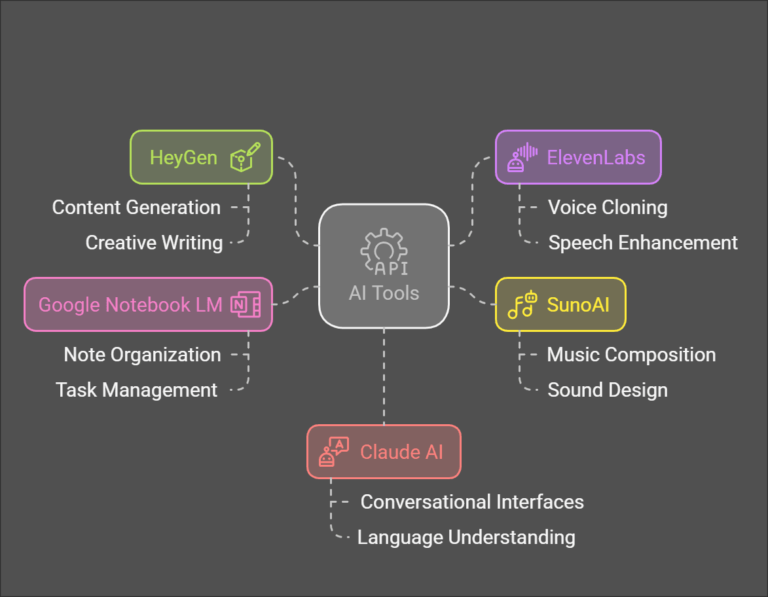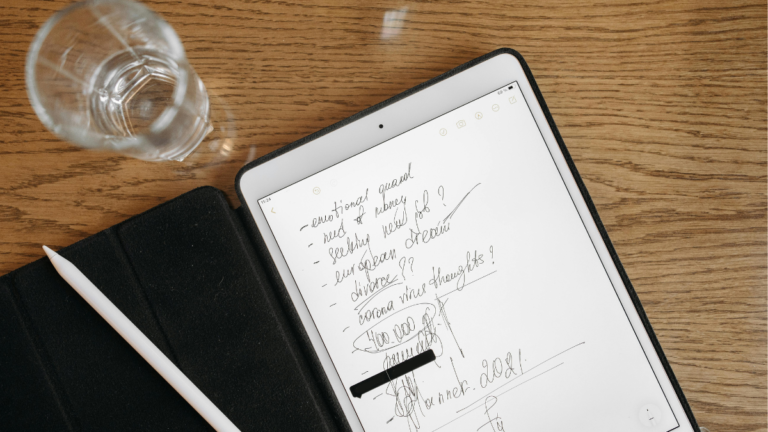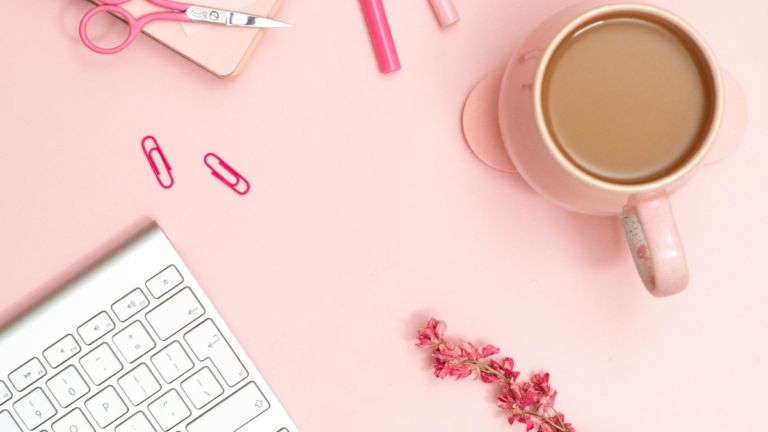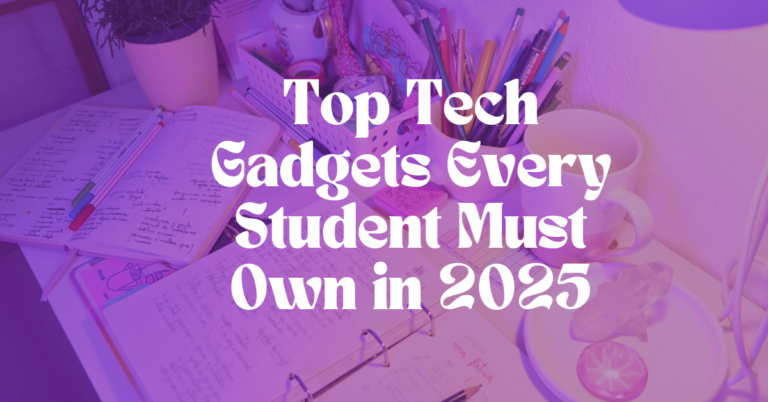How to Use Flashcards Effectively (with Free Tools)
Exams around the corner? Or maybe you just want to retain concepts better without feeling overwhelmed? If you’ve ever wondered how to study smarter (not harder), flashcards might just be your secret weapon.
The best part? Flashcards are simple, affordable, and incredibly effective when used the right way. In this post, I’ll show you how to use flashcards effectively, plus some free tools and smart tips to make your study sessions fun and productive.
💖 Save this guide on Pinterest so you can come back whenever you need a study boost!
Why Flashcards Work So Well for Students
Flashcards aren’t just pieces of paper with words on them—they’re based on science-backed learning methods.
- Active recall → Instead of just re-reading notes, flashcards force your brain to retrieve information.
- Spaced repetition → Reviewing cards at intervals strengthens memory over time.
- Self-testing → Every flashcard is like a mini quiz, which is proven to improve long-term learning.
That’s why top students (and even medical students!) swear by them.
If you’ve been struggling with endless reading or rewriting notes, flashcards can save hours and lock knowledge into your memory.
1. Start with Clear, Simple Flashcards
The #1 mistake students make? Overloading their flashcards.
Keep it simple:
- One question or term per card
- Short answers (avoid paragraphs)
- Use keywords, not full sentences
Example:
Don’t write: “What is photosynthesis? Photosynthesis is a process where green plants use sunlight to synthesize foods from carbon dioxide and water…”
Instead: “What is photosynthesis? → Process where plants make food using sunlight, CO₂, and water.”
Tip: If you’re writing by hand, a set of colorful index cards makes it easier to organize by subject. (I recommend a sturdy pack like these pastel index cards – they make study sessions look aesthetic and fun.)
2. Use Visuals to Boost Memory
Our brains love visuals. Adding simple drawings, doodles, or even printed images can make your flashcards 10x more memorable.
Ideas:
- Sketch a diagram for biology terms
- Use arrows, charts, or flow maps for processes
- Add emojis or symbols as quick memory triggers
One handy tool is a dual-tip marker set (like this colorful pack)—you can underline key terms in bold colors and add simple icons.
3. Organize by Subject or Topic
Messy flashcards = messy brain.
Organize them into sets so you can pull out exactly what you need. Try:
- Color coding (blue = science, green = math, pink = history)
- Labeling packs with binder clips or sticky notes
- Using a small flashcard storage box (like this one with dividers) to keep everything neat
Staying organized helps reduce overwhelm when exams are near.
4. Practice Active Recall the Right Way
Don’t just flip through cards mindlessly—test yourself like you mean it.
- Look at the question → answer it in your head (or out loud!) before flipping
- Cover the answer with your hand and try to recall fully
- Be honest with yourself: if you didn’t know it, put it in the “needs practice” pile
📌 Save this idea: Create three piles—Easy, Medium, Hard. Spend most of your time on “Hard” until it eventually moves into “Easy.”
5. Try the Spaced Repetition Method
Here’s the real magic: reviewing at strategic intervals. Instead of cramming, space out your study like this:
- Day 1 → Learn the card
- Day 2 → Review again
- Day 4 → Review again
- Day 7 → Review again
- Day 14 → Quick refresh
This technique (called the Leitner System) helps you remember things for months, not just for tomorrow’s quiz.
Apps like Anki (free) do this automatically for you.
6. Mix Up Your Flashcard Formats
Not all flashcards need to be “question → answer.” Try these:
- Word → Definition (great for vocab)
- Image → Term (perfect for anatomy or geography)
- Fill-in-the-blank (forces deeper thinking)
- True/False (fast-paced review)
Changing formats keeps your brain engaged and avoids study burnout.
7. Use Digital Flashcards for Flexibility
Paper flashcards are great, but digital tools add speed and convenience. You can study anywhere—bus rides, waiting rooms, even before bed.
Top Free Tools for Students:
- Quizlet → Super user-friendly with ready-made decks
- Anki → Best for spaced repetition (great for long-term memory)
- Brainscape → Clean, simple interface, great for quick review
If you like handwriting but still want digital access, try a tablet with a stylus (like an affordable iPad with Apple Pencil alternative) so you can create handwritten flashcards that sync online.
8. Add Audio for Language Learning
If you’re learning a new language, add an audio element.
- Record yourself pronouncing the word or phrase
- Use apps like Quizlet or Anki that allow audio integration
- Practice by listening on repeat while walking or doing chores
Bonus: Pair it with a good set of wireless earbuds (like these budget-friendly noise-canceling ones) so you can review without distractions.
9. Turn Flashcard Study into a Game
Studying doesn’t have to feel like work. Make it fun:
- Time yourself → How many correct answers in 2 minutes?
- Play with a friend → Quiz each other in turns
- Shuffle the deck → Keeps your brain from memorizing the order
Reward yourself—after mastering 20 flashcards, take a 5-minute break with a snack or short walk.
10. Combine Flashcards with Other Study Tools
Flashcards work best when paired with other study techniques. For example:
- Mind maps for big-picture understanding
- Sticky notes on your wall for quick reminders
- Digital planners (like this student planner app) to schedule review sessions
Flashcards = memory tool. Planners = organization. Together, they’re unstoppable.
11. Don’t Forget Review Sessions
The biggest mistake? Making flashcards and never reviewing them.
Set aside 10–15 minutes daily just for flashcards. Short, consistent practice beats long, rare sessions.
Use a study timer (like this cute pomodoro timer) to stay on track without burning out.
12. Personalize Your Flashcards
Make your flashcards feel “yours.” Add:
- Your own doodles
- Funny examples that make sense only to you
- Mnemonics (e.g., “PEMDAS = Please Excuse My Dear Aunt Sally” for math order of operations)
The more personal, the more memorable.
13. Free Printable Flashcard Templates
If you prefer paper but want neat designs, try free printable templates online.
- Canva (search “flashcard template”)
- Teachers Pay Teachers (many free sets)
- Microsoft Word/Google Docs table formatting
Print on thicker cardstock (like this affordable pack) so cards last longer and don’t bend easily.
Quick Recap: How to Use Flashcards Effectively
- Keep them simple and clear
- Use visuals and colors
- Organize with boxes or apps
- Practice active recall + spaced repetition
- Mix paper and digital depending on your style
- Make it fun, personal, and consistent
Final Thoughts
Flashcards are one of the oldest yet smartest learning hacks. Whether you’re prepping for finals, learning a new language, or just trying to study smarter, this method works if you stay consistent.
👉 Try out one of the free flashcard apps today, or grab a pack of index cards and start small.
👉 Pin this post on Pinterest so you can come back to these tips whenever exams roll around.
👉 Share this with a friend who’s always cramming the night before!
You’ll be amazed at how much faster and longer you remember things with just a little daily flashcard practice.
Here’s to studying smarter, not harder!



